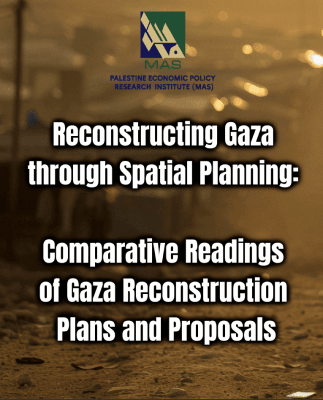Reconstructing Gaza through Spatial Planning: Comparative Readings of Gaza Reconstruction Plans and Proposals
As the devastating war on the Gaza Strip continues since 2023, an unprecedented surge of “day-after” political and governance initiatives, reconstruction plans, and proposals have emerged from a wide range of actors—international, regional, Palestinian, as well as corporate interests and research centers. This dynamic is not limited to political or academic spheres alone; it involves actors from diverse sectors, reflecting a state of both direct and indirect “competition” over shaping the future of Gaza—its infrastructure, governance structures, population distribution, and the limits of what is deemed possible for Palestinians in the public domain.
Several Israeli visions and plans have also emerged regarding the future of the Gaza Strip—either directly or implicitly—through Israeli think tanks and security institutions. While analyzing such proposals from a colonial perspective is indeed important, this paper does not address them within its primary analytical scope, given their distinct structural and political nature. These proposals are not presented as frameworks for cooperation or potential partnership, but rather reflect policies of imposed realities.
This paper, prepared by the Palestine Economic Policy Research Institute (MAS), serves as a concise analytical reference on the reconstruction plans tabled to date. The paper adopts a comparative critical review of plans and initiatives developed by various entities. These are to be presented and debated within a focused group of specialists and decision-makers, with a central emphasis on spatial and reconstruction dimensions—not as merely technical matters, but as domains intertwined with political, structural, and future-oriented considerations aimed at directing the shape of life and governance in Gaza over the coming years.
This paper reviews and analyzes ten major spatially and reconstruction-oriented plans through multiple dimensions: implementation models, Palestinian agency, political and security frameworks, and how urban space is addressed, whether as a site of authority, resistance, or subjugation. A comparative matrix accompanies this analysis to offer a shared basis for discussion and to clarify the overlaps and divergences between the proposed models. The paper concludes with a set of policy recommendations deemed necessary for moving forward. This effort is intended to assist decision-makers in shaping their visions and selecting the most viable options under conditions of occupation. The paper’s recommendations and the discussions it sparks are intended to provide a foundational platform for future policy formulation.

